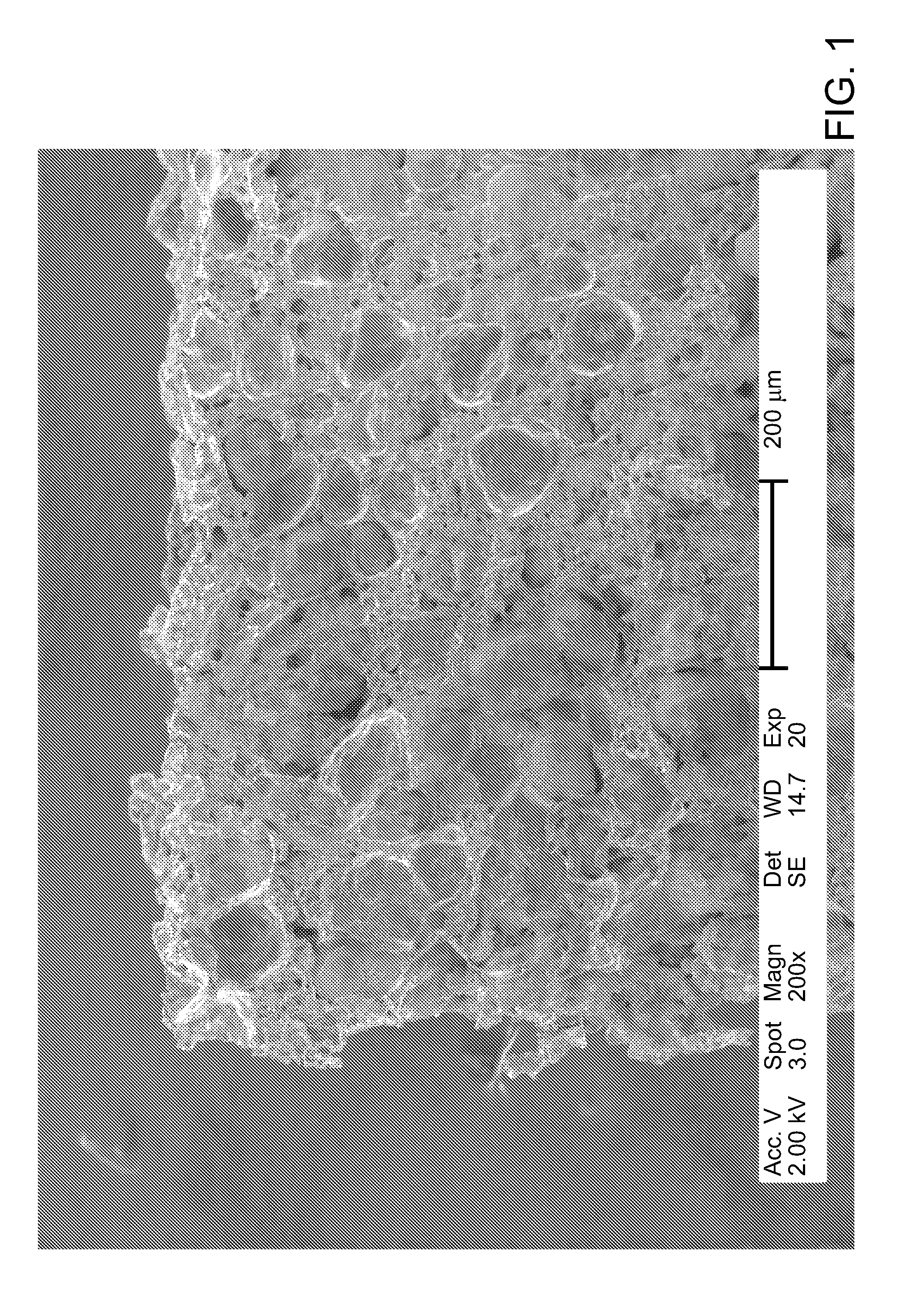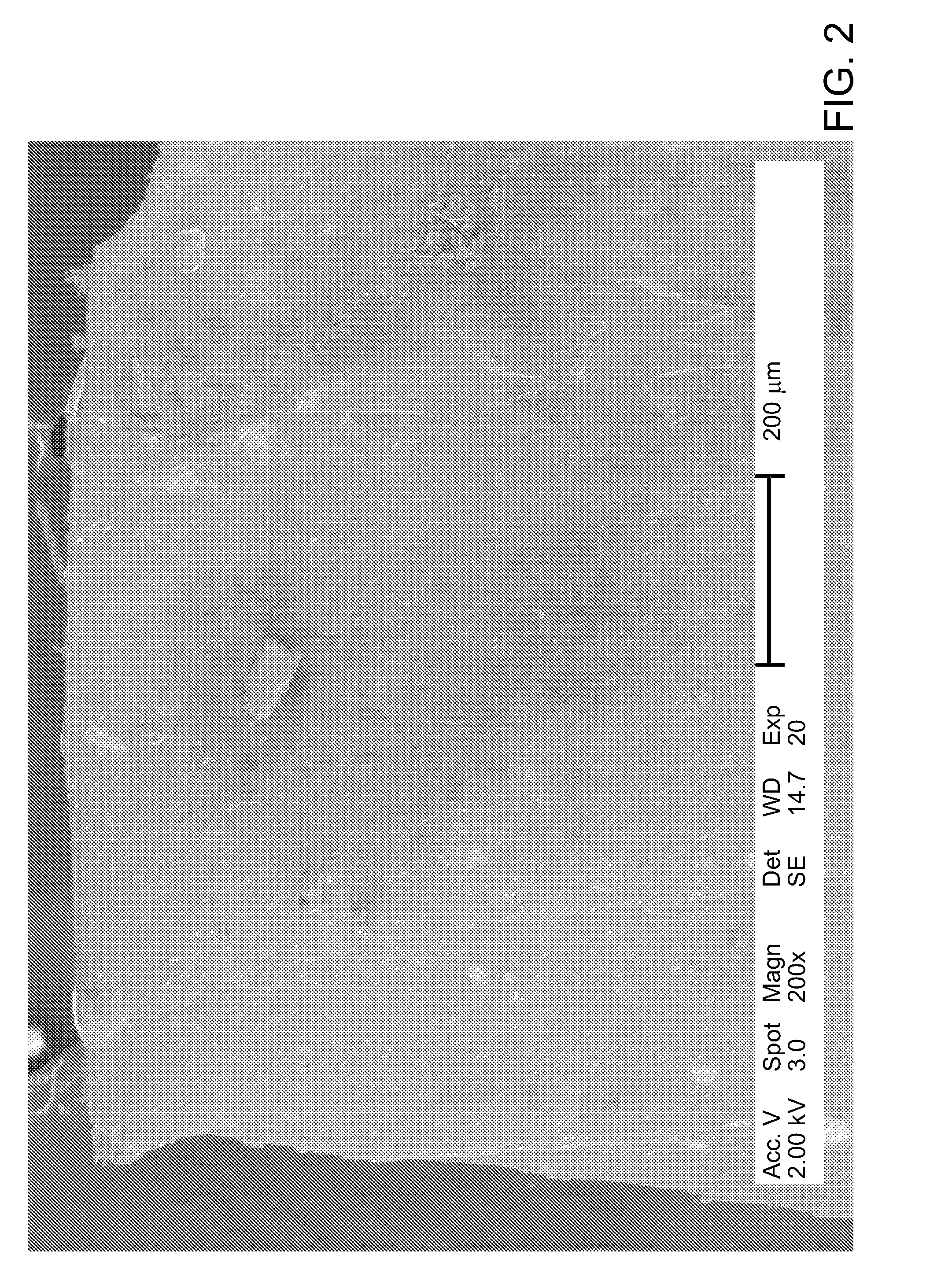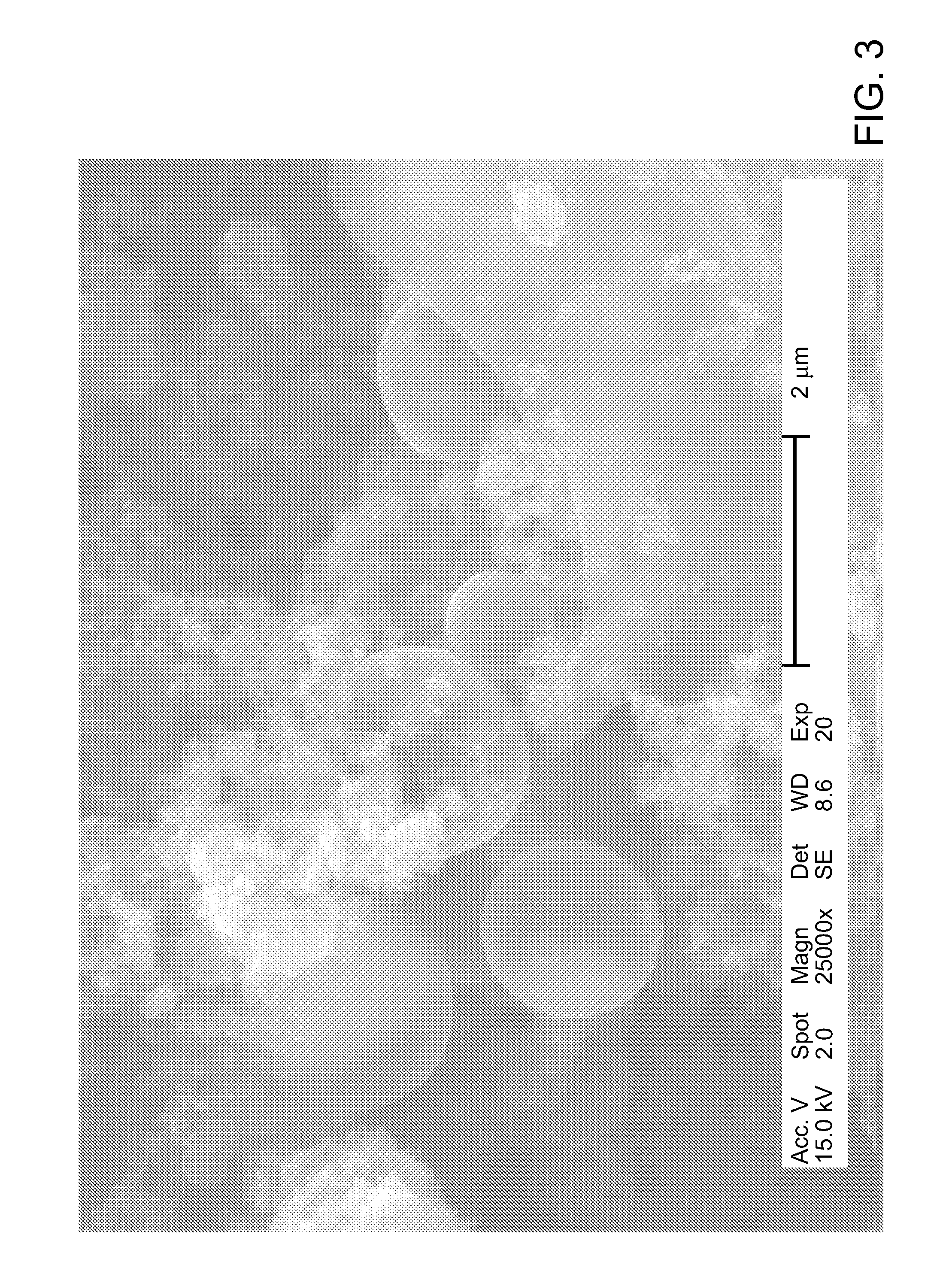Manufacturing of nitrogen-containing materials
- Summary
- Abstract
- Description
- Claims
- Application Information
AI Technical Summary
Benefits of technology
Problems solved by technology
Method used
Image
Examples
example 1
[0113]Automotive tire rubber was obtained from a local scrap tire processor in the form of either whole tires or ground rubber crumb of the size ranging from 10 mesh to 20 mesh. In instances, the whole tire was cut in small square pieces, approximately ½ inch in size. Wood biomass was sampled as fresh cuts of local pine. Anhydrous ammonia was discharged from a cylinder and liquefied in a dry ice / acetone chilling bath. Dichloromethane (99.5%) was used as received. Liquid ammonia and dichloromethane were mixed in the 1:1 molar ratio, which was approximately a 1:1.4 vol / vol ratio. Until otherwise stated, the pressure reaction vessel used was a 3 mL mini-reactor consisting of a cap and a plug.
example 2
[0114]1.0 g of tire rubber either as a single piece or as rubber crumb and 2 mL of the chemical reagent prepared as indicated in Example 1 were charged into a reaction vessel, which was sealed and kept for 6 hours at room temperature to allow the chemical reagent to penetrate into the rubber matrix. Then the reaction vessel was heated to 120° C. (250° F.), kept at the said temperature for 6 hours, and subsequently cooled to room temperature. At the end of the experiment, it was found that the rubber particles increased their volume by approximately two times being filled with a white microcrystalline material, which was identified with elemental analysis and NMR as a mixture of ammonium chloride and hexamethylenetetramine. After treatment, the rubber particles completely lost their resilience; they were soft and could be torn apart by hand.
example 3
[0115]A similar tire rubber sample treated exactly as indicated in Example 2 was weighed, placed into 100 mL of deionized water and vigorously stirred for 24 hours to remove water-soluble matter. After drying it was found that the rubber sample lost 115 wt % of its original weight. Then the dried sample was placed in deionized water and left in water for 21 days, after which it was weighed again. It was found that due to the water absorption, the sample increased its dry weight by 342 wt %. Then the wet sample was removed from water and left in the air at room temperature. On the tenth day of drying it was weighed and demonstrated an almost complete loss of the absorbed water. This example illustrates the ability of the treated rubber material to slowly release fertilizer as well as to absorb and retain significant amounts of water, multiply exceeding its own weight.
PUM
| Property | Measurement | Unit |
|---|---|---|
| Temperature | aaaaa | aaaaa |
| Temperature | aaaaa | aaaaa |
| Temperature | aaaaa | aaaaa |
Abstract
Description
Claims
Application Information
 Login to View More
Login to View More - R&D
- Intellectual Property
- Life Sciences
- Materials
- Tech Scout
- Unparalleled Data Quality
- Higher Quality Content
- 60% Fewer Hallucinations
Browse by: Latest US Patents, China's latest patents, Technical Efficacy Thesaurus, Application Domain, Technology Topic, Popular Technical Reports.
© 2025 PatSnap. All rights reserved.Legal|Privacy policy|Modern Slavery Act Transparency Statement|Sitemap|About US| Contact US: help@patsnap.com



